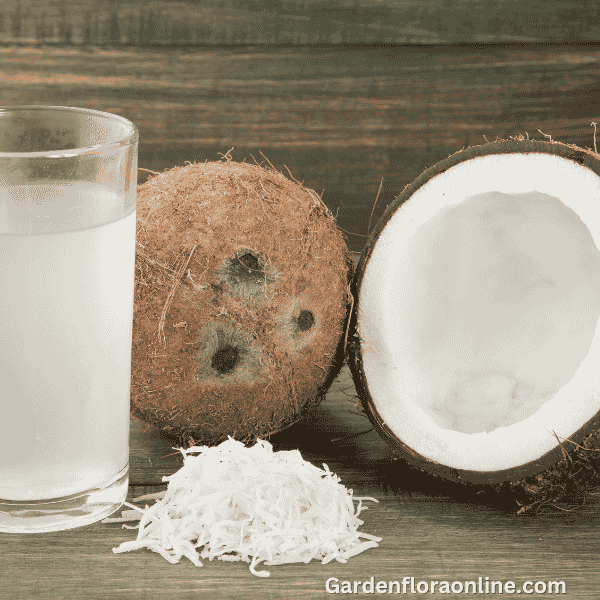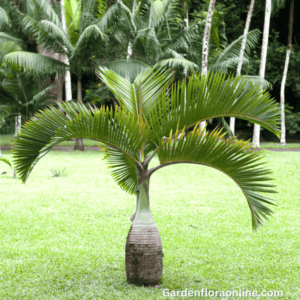Cocos nucifera (Coconut Palm)
Evergreen palm tree ranging 2-30 m tall. Unbranched stem topped by rosette of pinnate leaves, 1.8-4.5 m long; leaflets equidistant, linear-lanceolate, 60-90 cm, coriaceous; petiole stout, 90-150 cm. Numerous yellow unisexual flowers present in spadix. Fruit obovoid or subglobose, 20-30 cm, with fibrous husk surrounding woody shell containing coconut meat, milk, and oil.
Cultivation: Full sun, salt-tolerant, adaptable to various soils; propagated by seeds.
Etymology: The genus name “Cocos” is derived from the Portuguese or Spanish word coco, meaning smiling or grinning face a reference to the three germination pores on the coconut that resemble a face. The species epithet “nucifera” is Latin, where nux means nut and fero means bearing, together meaning nut-bearing, which aptly describes the coconut palm.








